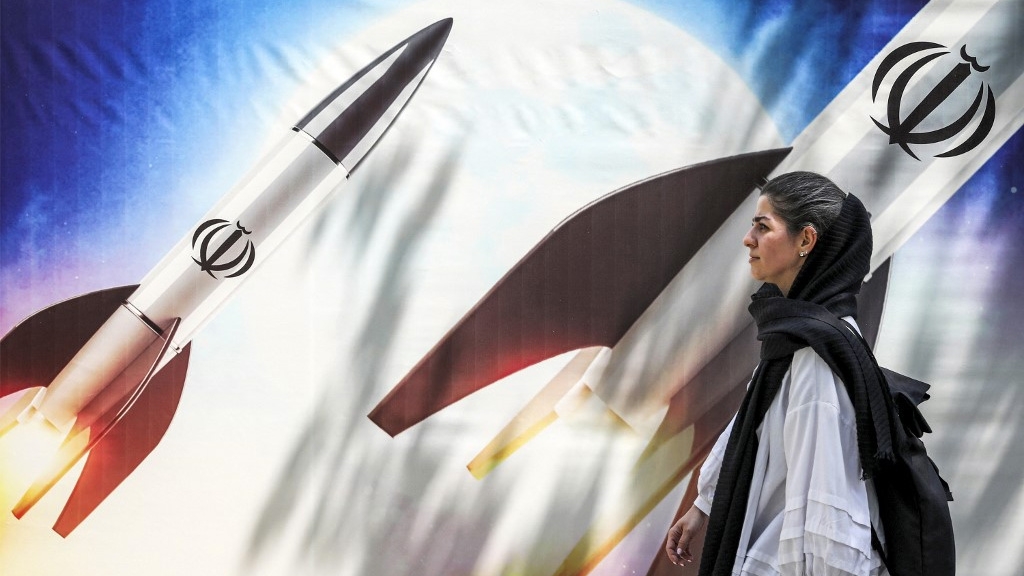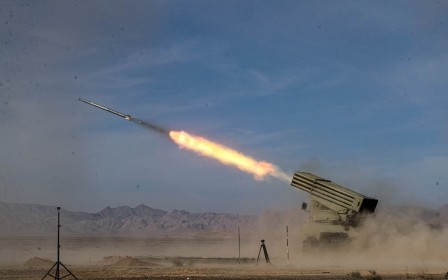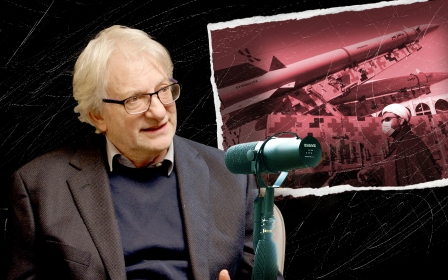How Iranian attacks on Israel redefined the Middle East conflict landscape

“We have established a new equation: henceforth, any assault by [Israel] on our people, property, or interests will trigger a reciprocal response originating from within the Islamic Republic of Iran,” Hossein Salami, chief commander of the Islamic Revolutionary Guard Corps, said on Sunday.
His comments came after Iran a day earlier launched its first direct attack on Israel, one that was unprecedented in range, intensity, scale, scope, alliances and, perhaps, implications.
In retaliation for Israel’s killing of senior Iranian commanders in Damascus earlier this month, Iran hit two Israeli air bases in the Negev (Naqab) desert more than 1,000 kilometres from its westernmost border, and across “unfriendly” territories.
The Nevatim air base is one of Israel’s largest. Located just east of Beersheba, it houses F-35I Adir stealth fighters, which were allegedly involved in the 1 April bombing of the Iranian consulate in Damascus that killed more than a dozen people, including several top IRGC officials.
Iran’s ballistic missiles also struck the Ramon air base, which is located south of Beersheba and houses several squadrons of F-16I Sufa multirole fighters and AH-64A/D Apache attack helicopters.
New MEE newsletter: Jerusalem Dispatch
Sign up to get the latest insights and analysis on Israel-Palestine, alongside Turkey Unpacked and other MEE newsletters
The intensity of the attack was also a first. It was not only unprecedented in Israel’s history, but in the recent history of drone warfare.
Iran attacked Israel with more than 300 airborne munitions, including around 170 suicide drones, 30 cruise missiles and - the most dangerous among the three categories - 120 ballistic missiles.
Quantity and quality
The drone swarm alone was the largest ever recorded, exceeding the Islamic State’s drone storm during the Battle of Mosul (comprising about 70 modified and weaponised civilian drones simultaneously launched) and similar-sized Russian drone attacks on Ukraine.
The Iranian-made Shahed-136 loitering munitions used in the attack on Israel are slow and noisy, making their detection and destruction less difficult. But quantity has a quality all its own.
The drone swarms and other aerial munitions distracted Israel’s multi-layered, integrated air defences, permitting a few ballistic missiles to breach and hit their targets.
Follow Middle East Eye's live coverage of the Israel-Palestine war
The scale and the scope of the alliance marked another first. Iran’s non-state allies were able to simultaneously coordinate attacks, ranging from long- and medium-range ballistic and cruise missiles launched by the Houthis in Yemen, to primitive 122mm Grad rockets launched by Hezbollah in southern Lebanon, to loitering munitions launched by Iraqi militias.
Israel’s collective defence alliance was also unprecedented. The US, UK, France, Jordan and other Arab countries defended Israeli airspace. While tactical and operational alliances between Israel and some Arab states in land warfare and military intelligence are not new, this is the first record of air-defending Israeli skies by one or more Arab states.
The equilibrium of terror and power may hold the fragile keys to a harsh stability, perpetuated not through victory but through the stark deterrence of reciprocal capabilities
At the same time, Iran’s operation was able to overwhelm an advanced, multi-layered Israeli integrated air-defence system, widely regarded as the top tier of air defence. Iran also had the intelligence assets to track where the consulate bombing originated and how to launch a counterstrike.
These are all potential indicators for game-changes. But overall, the consequences are largely symbolic. The strikes remain in the category of strategic signalling, as opposed to military effectiveness. Iran did not (or perhaps could not) attempt to radar-jam, suppress or destroy Israel’s air defences, intercept Israeli warplanes, or even sustain precision.
The Nevatim air base was operational on the same day, even with cratered runways, underscoring the strengths of Israeli air defences, helped by an unprecedented coalition of regional and international allies. And Israel is likely to strike back, despite pressure from allies not to retaliate.
As the dust settles, the echoes of Iran’s counterstrike linger as harbingers of continued conflict, where strategic signalling endures and military effectiveness is gauged by the ability to innovate, adapt, coalition-build, counterstrike and sustain.
In this enduring confrontation, the equilibrium of terror and power may hold the fragile keys to a harsh stability, perpetuated not through victory but through the stark deterrence of reciprocal capabilities.
The views expressed in this article belong to the author and do not necessarily reflect the editorial policy of Middle East Eye.
Middle East Eye delivers independent and unrivalled coverage and analysis of the Middle East, North Africa and beyond. To learn more about republishing this content and the associated fees, please fill out this form. More about MEE can be found here.





